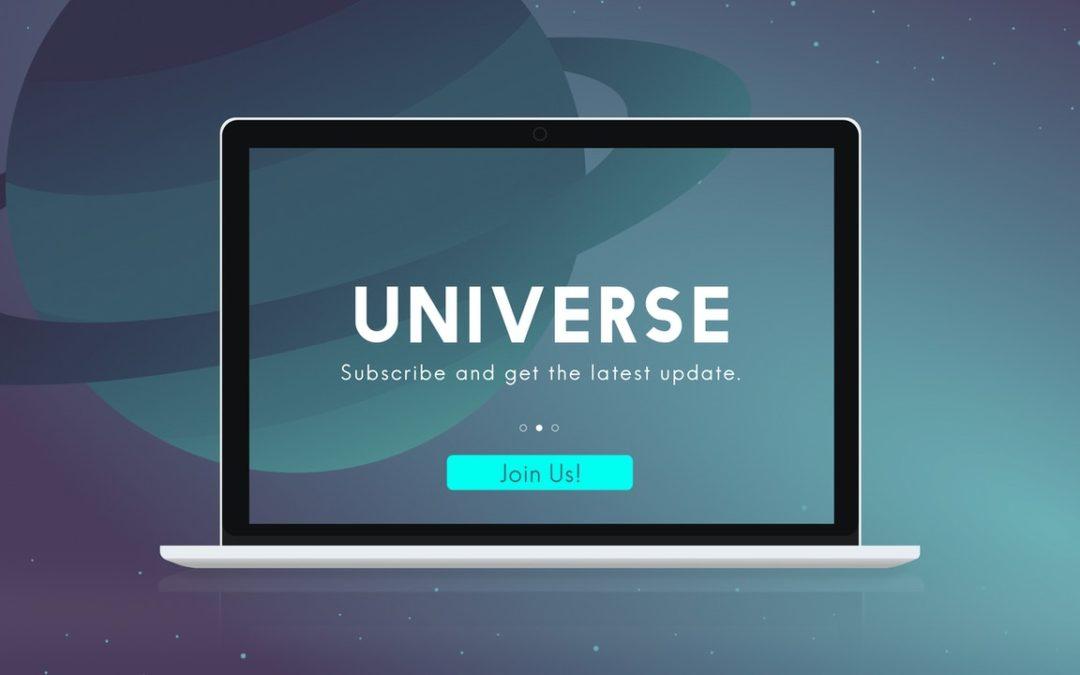Wondering how to generate more traffic to your website? Feeling overwhelmed with information and not knowing which method works and which doesn't? We are here to help you. Below we have prepared some proven tactics for attracting traffic to your site, which will certainly benefit you.
Content Marketing
1. Write useful content
A proven method of generating traffic to your website is to create content that answers frequently asked questions on Google. At first glance, this tactic may sound quite simple, but it really works.
The first step you need to take is to search for frequently asked questions using keywords.
Respond to user inquiries in the form of content on your site. Write an article on the topic or separate a section on the product page of a product that matches the information you are looking for. It is important to consider SEO optimization. This way you will be ranked in a visible position when searching on Google and respectively interested users will click on the link to your site.
Remember - content marketing works when that content is valuable and informative to the user, even without the product or service you want to target through it.
2. Publish more comprehensive texts
There is no definite answer to how long the perfect content should be. It is important that the topic is thoroughly considered. Statistics show that longer content has a better chance of success. Some of the reasons for this are:
It takes the lead because it covers the topic more thoroughly, and according to Google, it makes it better than the others; Helps turn readers into customers; Longer content may rank higher in the Google rankings.
3. Create rankings
Rankings have proven to be a very good method of generating traffic to your site, because numbers act as a psychological trigger, catching the eye. In addition, they provide useful statistical information to users on web and digital life. Be accurate and specific with this type of content and choose your sources carefully.
4. Create catchy headlines
The title is a fundamental part of your content. It is a good idea to arouse curiosity and provoke the reader. Take your time and think of a word - "hook" to "grab" attention. It is important to identify your target users. Use words in the title that you think they might like, but avoid slang ones. Use numbers and CTA words and expressions. However, do not forget that the title should give a clear idea of what the text is about, without misleading.
5. Give new life to old blog posts
Sometimes the solution to a problem can be simple and easy. It is a very good idea to "breathe new life" into old blog posts that can be supplemented and updated:
- Start by updating information that is no longer up to date.
- Add more photos and videos to make it more appealing to the reader.
- Update the introduction.
Use CTA words and phrases to make sure you get attention, but be careful because the user should not be misled. Format the text so that it is easy to read. Use bullets and make sentences precise, short and clear.
Promote blog posts again. This is your work, which you have made sure to be relevant and useful. It is good to remind the reader and push him to rediscover his valuable piece of information in the new-old article.
Email Marketing
Every business and website needs professional mail. Interestingly, half of the world's population uses email, so it's important to know how to generate traffic through this platform as well.
6. Increase traffic with Email Marketing
Email Marketing is a relatively inexpensive but very effective method of generating traffic to your website. There are several steps you can take to attract new customers:
- Create a subscriber list;
- Choose the right software for your email marketing strategy;
- Make sure your email template also works from mobile devices and various email clients;
- Add CTA (call to action) words and phrases;
- Share valuable information that your subscribers look forward to. Be careful not to become another spam in the mailbox.
- Don't send too many emails so as not to backfire.
- Content promotion
So far you have the content, now you need to find a way to promote it properly. Here are some helpful ways to distribute your content effectively.
7. Write articles for external sites
In this way, your content will have the opportunity to reach a wider audience that has interests related to the services you offer. It will generate traffic to your website, increasing its popularity and knowledge of the services you offer.
8. Publish external articles on your website
Invite guest bloggers to write articles for your website. It is good to know them and have observations on their work to make sure that it will fit the theme and style of your blog. Be sure to discuss with them in advance what the main messages and directions of their texts are. Set specific deadlines to avoid inconsistencies in expectations. It is very likely that the guest blogger will promote the article he created for you through his communication channels, thus increasing the traffic to your website and you get a "win-win" situation.
SEO
No matter how hard you try, never neglect His Majesty the SEO!
The higher you rank in Google search, the more users will find and visit your website.
To get the most out of SEO, create content that users search on Google, written and formatted in a way that search engine bots can read it most easily and quickly.
Your website needs to be properly optimized. Here are some basic steps you can take to make sure your website contains everything Google expects to "see":
- Design that corresponds to the services / products you offer;
- Seamless use via mobile devices;
- Valid SSL certificate;
- Fast and reliable web hosting;
- Links to relevant sites;
- Content that users are looking for and want to read.
Keyword research is about finding relevant phrases and words that your audience would be looking for. Once you've found them, use them in the posts you write.
9. Choose the right keywords
In order for search engines to "notice" you, you must also use the right keywords. As you search and analyze, consider the number of people searching for that keyword each month;
You can also use some paid or free tools. Here are some examples:
Serpstat; UberSuggest; Semrush; Google Keyword Planner.
10. Keep up with the news
Technical SEO is the process of optimizing your website for search engine bots. It's called technical because it focuses not on the content, but rather on the "infrastructure" of the site itself. Below you can see some of the best practices applied to improve technical optimization:
Optimize the URL structure of your site; Activate SSL certificate; Make your site mobile-friendly; Optimize your Robots.txt file; Make sure your website loads fast; Optimize your 404 pages.
11. Optimize the images on the site
Optimizing images on a site improves the loading speed of its pages. Also, if the images rank well in the "image search" section of Google, this will bring even more visitors to the site.
The optimization of the images on the site is necessary because its pages start loading slower when there are too large images (both in size and kilobytes). Particularly sensitive to the size of the images are mobile visitors who load the site via mobile internet. The larger the images, the slower the pages load.
12. Repair any broken links
Taking this step is extremely important for improving the SEO optimization of your site. But why? How do these links affect you?
The truth is that if you come across a broken link, Google may reject it directly. This would be a big problem because this way you will not be able to rank higher in the Google search engine. Don't take this risk, look for it and if you find broken links, fix them quickly.
13. Increase the credibility of your site through interlinks (internal links)
Internal links are those that take you from one page to another on the same website. In principle, they appear quite naturally when the new content is in some way related to the old one or a similar topic. Adding interlinks:
- Helps your visitors navigate your website better;
- Adds value and credibility to your website as a whole.
14. Make sure your site is fast
We mentioned this aspect a little earlier, but the speed of your site really has a huge impact on SEO optimization, because it is a direct ranking factor. The speed of a site is also of great importance to users.
Think about how much time you would spend on a platform if it loaded slowly? Would you wait or give up? Fast pages are much more effective at keeping users on your website longer, and Google knows that, too. Make sure your website loads in no more than 2-3 seconds. To improve your speed, we advise you to:
- Compress images that you think are too heavy;
- Use lighter WordPress themes;
- Trust a reliable hosting company.
Social media
Social media is another very good way to generate traffic and promote your brand. It is important to know which social platforms your target audience uses and to be active in them. Here are some ways to generate traffic through social media.
15. Join Facebook groups
A very easy step you can take is to join Facebook groups that include people who might be interested in the product or service you offer. It is important that you follow the rules of these communities and share information and content about your company in moderation. Keep an eye out for other interest groups where there may be discussions about you or your competitors. In this way you will feel the mood of users and you will be able to take action according to their needs and desires.
16. Be active
This sounds like a very simple step, but it is often overlooked.
Don't forget to put a link to your website on platforms like Facebook, Instagram and LinkedIn; Make sure your content is interesting and credible; Don't try to mislead users with your accounts; Post when your target audience is online; Try to create discussions and communicate with your readers / users; Promote the content of your blog.
17. Publish at specific times
This again depends on the audience and platform you have chosen. There are many statistics and studies that show what is the best time to be active in various social networks. Here are the results:
Facebook - Thursday around 8 p.m .; LinkedIn - Wednesday around 9 am; Instagram - Friday around 7 p.m .; Twitter - Thursday around 5 p.m.
18. Add a share button on social networks
It is very important that sharing your content on various social networks is easy and accessible for your users. People like to share pages and articles they find useful, interesting or fun with their friends.
19. Create a publishing plan
Being organized is always to our advantage. That is why we advise you to create a calendar in which to record each of your activities and posts. Keep track of whether your target groups share, like, and which topics are the most read and commented on. This will make it much easier for you to organize your content in the future and reap even more success by generating more traffic to your website.
20. Use Facebook advertising
Generating traffic through your Facebook page is of great importance and the platform itself allows you to target exactly your audience. If you don't have a Facebook page on your website yet, do it quickly. This will make it easier for you to build an image and trust your site. It is good advice for your posts to be not only product-oriented, but also interesting, fun and useful.
21. Be on Instagram
Instagram is one of the fastest growing and fastest growing social platforms and is a great way to generate traffic. To get the most out of this platform, you need to carefully consider the elements we've highlighted below:
- Your name and username are the 2 elements that can be listed in the search engine, so they must be carefully selected;
- The bio description and profile picture must be eye-catching and attention-grabbing;
- You must include a URL link to your website in the bio description;
- Make sure your account is a business;
- Find and use appropriate hashtags;
- Post content that is exclusive to Instagram;
- Be active and create discussions with your followers, which will gradually become your users.
22. Create a Youtube channel
Did you know that YouTube is the most widely used search engine after Google? People spend approximately 1 billion hours a day on YouTube, so even a very small percentage of those views would have a huge impact on your website.
A huge number of videos are posted on Youtube every day, so the probability that yours will go unnoticed is quite high. However, the tips below are sure to help you generate traffic:
Put a link to your website in the header of the channel; Don't forget to put a link in the description of each video; You use CTA words and phrases in your videos. Once you have a user community, it's a good idea to target it with ads. To get the most out of Youtube:
- Choose the right advertising format;
- Create compelling ads.
23. Don't ignore LinkedIn either
LinkedIn is one of the best B2B platforms. It is used by over 600 million users. LinkedIn is a place where business professionals can connect with other professionals in their niche and learn more about them. If you want to generate traffic to your B2B website or blog, this is your place.
- Optimize your account regularly;
- Join groups from your niche;
- Create a page for your company;
- Post useful content regularly;
- Publish articles.
Conclusion
We hope that these proven tactics have intrigued you and provoked you to apply them.
They would certainly have an impact on generating traffic to your website and would not take you much time and effort.
Follow our blog and subscribe to get more inspiration for your business development. Do not hesitate to tell us in the comments which topic is most interesting or unfamiliar to you, we are available to assist you

Nadejda Milanova
An experienced Content creator in the field of Search Engine Optimization (SEO) and WordPress. A true proffesional with a Master's degree focused on journalism.
Read more by Nadejda Milanova





